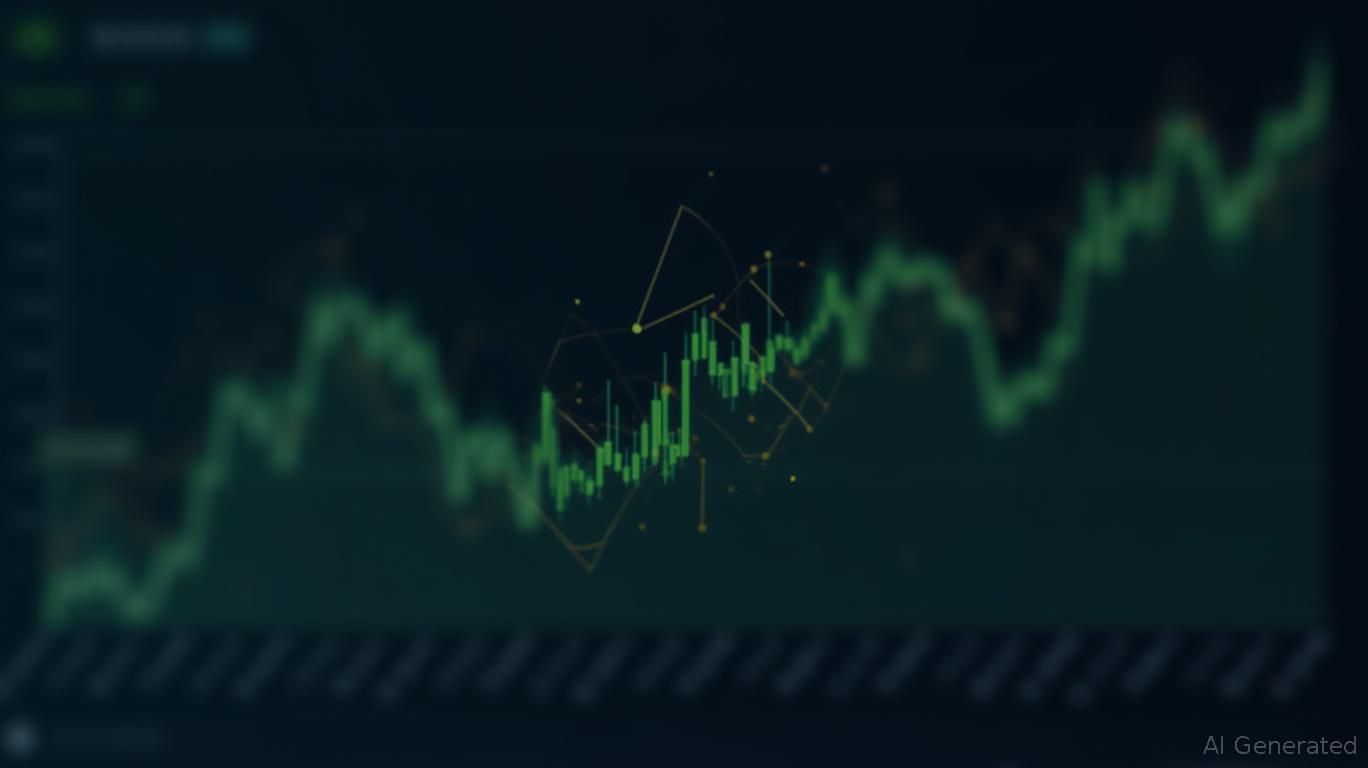Direxion's NVDD: Navigating Dividend Declines and Volatility in NVIDIA's Shadow
The Direxion Daily
Bear 1X Shares ETF (NVDD), designed to profit from declines in (NVDA) stock, has entered a period of heightened scrutiny. Recent trends in its dividend distributions, coupled with its expense and the inherent risks of inverse exposure strategies, underscore a complex investment landscape. For investors considering as a tool to hedge against NVIDIA's volatility or capitalize on short-term opportunities, these factors demand careful analysis.The Dividend Decline: A Signal of Structural Shifts?
NVDD's dividend history reveals a concerning trend. In the trailing twelve months ending July 2025, the fund's yield stands at 4.8%, but this figure masks a significant drop in per-share payouts. The last dividend, paid in July 2025, was $0.04 USD, a 22.3% decrease from the prior quarter's $0.05 USD. While no explicit June 2025 dividend announcement has been made, projections suggest the next ex-dividend date will occur in September 2025, with an anticipated payout of $0.0408—a further erosion from 2024's high of $0.07932 in December.
The decline reflects broader pressures on inverse ETFs. NVDD's dividends are tied to the net asset value (NAV) of its holdings, which reset daily to track the inverse of NVDA's performance. Over time, this daily compounding mechanism—where losses or gains are recalculated each session—can erode returns, particularly in volatile markets. For instance, if NVDA experiences even minor fluctuations, the inverse exposure's geometric decay amplifies the drag on NAV, reducing distributable income.

Fund Mechanics: The Double-Edged Sword of Inverse Exposure
NVDD's appeal lies in its stated objective: to deliver 1x daily inverse exposure to NVIDIA's stock. This means it aims to rise by 1% for every 1% drop in NVDA. However, this structure comes with critical cave points:
1. Daily Reset Risk: The fund's performance compounds daily, meaning that over multiple periods, even small deviations from perfect inverse tracking can lead to significant divergence from the benchmark. For example, if NVDA falls by 1% on Day 1 and rises by 1% on Day 2, the fund's total return would not be +1% -1% = 0%, but rather (1 - 0.01) * (1 + 0.01) = -0.01%, a net loss.
2. Volatility-Driven Costs: NVDA's stock has been notoriously volatile, with swings of 5-10% in single sessions. Such turbulence forces NVDD to rebalance frequently, amplifying trading costs and operational expenses.
The High Expense Ratio: A Persistent Headwind
NVDD's expense ratio stands at 1.23% (gross) and 1.02% (net) as of June 2025, with an expense cap agreement limiting costs to 0.95% through September 2026. While the net figure appears manageable, investors must recognize that:
- The gross expense ratio includes acquired fund fees and other embedded costs, which can rise during periods of heightened volatility.
- The inverse strategy's operational complexity—requiring frequent derivatives or futures trades—elevates execution costs, even if partially offset by expense caps.
Implications for Investors: Short-Term Plays vs. Long-Term Risks
NVDD's mechanics and cost structure make it a highly speculative tool, best suited for short-term trades rather than buy-and-hold strategies. Consider the following scenarios:
1. Short-Term Opportunity: If an investor anticipates a near-term correction in NVDA—perhaps due to macroeconomic headwinds or supply chain disruptions—NVDD could offer asymmetric upside. However, this requires precise timing, as prolonged NVDA outperformance would compound losses.
2. Hedging Risk: Institutional investors might use NVDD to hedge a concentrated NVDA position. Yet, the fund's expense drag and daily reset mechanics necessitate frequent rebalancing, adding operational complexity.
3. Compounding Decay: Over extended periods, the inverse ETF's geometric decline becomes mathematically insurmountable. Even if NVDA's price returns to its starting point after a series of fluctuations, NVDD's NAV could remain perpetually diminished.
Investment Advice: Proceed with Caution
For retail investors, NVDD's allure lies in its inverse leverage—a lever that cuts both ways. Key takeaways:
- Avoid Long-Term Holds: The compounding decay and expense ratio make NVDD unsuitable for anything beyond a few weeks.
- Monitor Dividend Trends: The shrinking payout underscores the fund's structural challenges. A continued decline could signal reduced liquidity or investor confidence.
- Pair with Technical Analysis: Use NVDD only alongside rigorous analysis of NVDA's technicals and macro catalysts (e.g., AI adoption rates, GPU demand).

Conclusion: A High-Risk Tool in a Volatile Ecosystem
Direxion's NVDD is a potent instrument for those willing to navigate NVIDIA's volatility, but its dividend decline, expense structure, and inverse mechanics render it a niche play. Investors must weigh the potential rewards against the risks of compounding losses and structural decay. For most, a better approach may be to focus on direct exposure to NVIDIA's long-term growth or alternative hedging instruments with lower operational overhead. In the world of inverse ETFs, patience is the enemy—and NVDD's design ensures that even a momentary lapse in timing can prove costly.
Sign up for free to continue reading
By continuing, I agree to the
Market Data Terms of Service and Privacy Statement

Comments
No comments yet